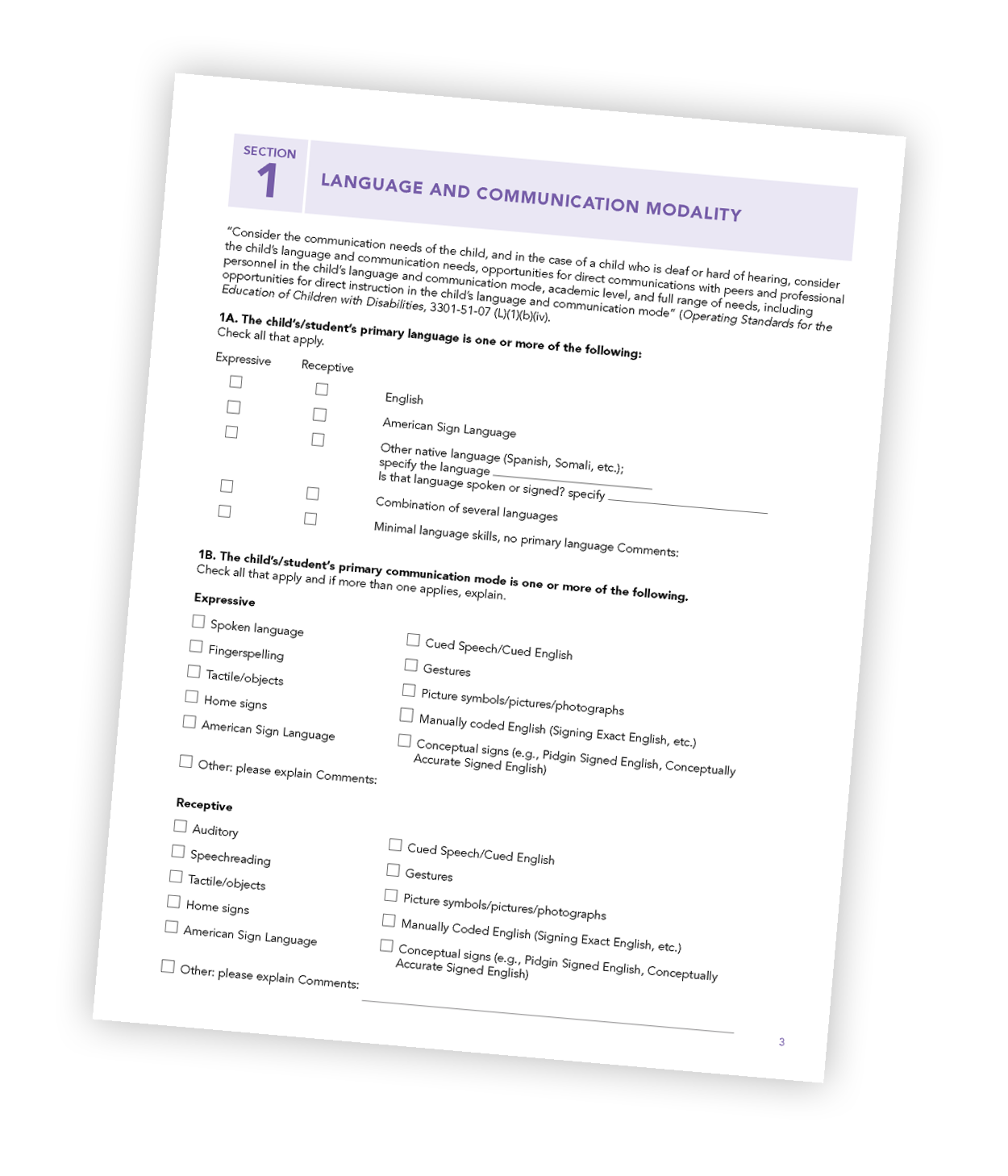Communication Planning Guide for Students Who Are Deaf or Hard of Hearing
Language and Communication Modality
Video: Outreach - 03_Tabitha
This video is being reviewed for audio description.
What is Audio Description?
When Audio Description (AD) is enabled, descriptive language narrates what is on the screen. To learn more, visit our accessibility webpage.
Video Player Help
Kaltura Video Hosting: This website uses Kaltura, a video hosting company, to serve video content. If you are having difficulty viewing videos on this site, it may mean that your location (e.g., school district, organization) is blocking or filtering the Kaltura website. Please contact your IT personnel to resolve this issue.
Accessibility: We strive to make this website accessible for all users, including people with disabilities. To learn more visit our accessibility webpage.
Captions / Transcript
After hitting play you can access an interactive transcript for this video by selecting the Show Transcript icon![]() in the top right corner of the video when you select play.
in the top right corner of the video when you select play.
You can turn on captions by selecting the Enable Captions icon![]() in the bottom right corner. Captions can also be turned on by selecting the Settings icon
in the bottom right corner. Captions can also be turned on by selecting the Settings icon![]() , where you can also set your caption preferences.
, where you can also set your caption preferences.
When available, you can use Spanish subtitles for this video by selecting Settings![]() and choosing Spanish in the Captions drop down menu.
and choosing Spanish in the Captions drop down menu.
Section 1
The purpose of this section is to address language and communication modality use throughout a student’s day to support continuous access and engagement in educational opportunities. Students need to develop English language literacy skills based on their individual abilities and potential, to ensure academic success no matter what modality they use to communicate. Deaf and hard of hearing (D/HH) students often “code switch” based on the needs of their communication partner. This means students need to have an awareness of their partner’s communication needs and their own preference. This is an important self-advocacy skill for deaf and hard of hearing students to develop, and they should be meaningfully guided and supported as they develop this skill. When possible, include the student in the discussion of his/her preferred communication modes.
As teams plan for addressing the language and communication modality, ensuring access and engagement for a student across a school day, consider:
Sample Discussion Questions
- Is the student’s language level sufficient to acquire the grade-level skills and concepts of the general education curriculum? If not, how will the team address the development of language skills?
- What communication mode does the student use to communicate with peers, hearing and deaf?
- What communication mode does the student use to communicate with adults, hearing and deaf?
- What communication mode does the student use in familiar situations?
- What communication mode does the student use in new and unfamiliar situations?
- Does the student change communication mode based on the environment (e.g., general education classroom, resources room, playground, gym class, lunchroom, hallway)?

Video: Outreach - 04_Carrie
This video is being reviewed for audio description.
What is Audio Description?
When Audio Description (AD) is enabled, descriptive language narrates what is on the screen. To learn more, visit our accessibility webpage.
Video Player Help
Kaltura Video Hosting: This website uses Kaltura, a video hosting company, to serve video content. If you are having difficulty viewing videos on this site, it may mean that your location (e.g., school district, organization) is blocking or filtering the Kaltura website. Please contact your IT personnel to resolve this issue.
Accessibility: We strive to make this website accessible for all users, including people with disabilities. To learn more visit our accessibility webpage.
Captions / Transcript
After hitting play you can access an interactive transcript for this video by selecting the Show Transcript icon![]() in the top right corner of the video when you select play.
in the top right corner of the video when you select play.
You can turn on captions by selecting the Enable Captions icon![]() in the bottom right corner. Captions can also be turned on by selecting the Settings icon
in the bottom right corner. Captions can also be turned on by selecting the Settings icon![]() , where you can also set your caption preferences.
, where you can also set your caption preferences.
When available, you can use Spanish subtitles for this video by selecting Settings![]() and choosing Spanish in the Captions drop down menu.
and choosing Spanish in the Captions drop down menu.